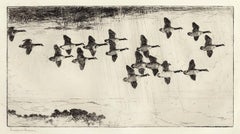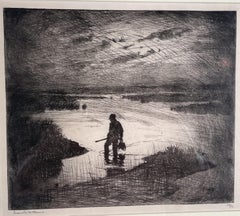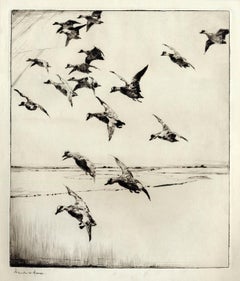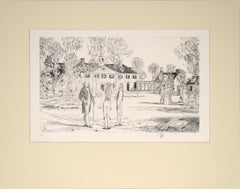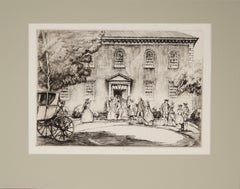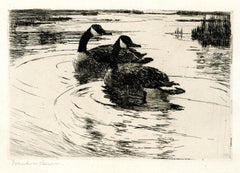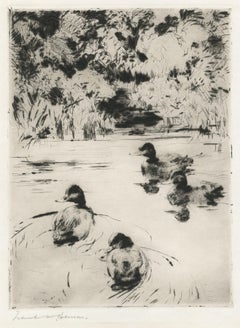Frank W. Benson Art
Frank Weston Benson, well known for his American Impressionist paintings, also produced an incredible body of prints — etchings, drypoints and a few lithographs. Born and raised on the North Shore of Massachusetts, Benson, a natural outdoorsman, grew up sailing, fishing, and hunting. From a young age, he was fascinated with drawing and birding — this keen interest continued throughout his life. His first art instruction was with Otto Grundman, at the Museum of Fine Arts in Boston, and then in 1883 in Paris at the Académie Julian, where he studied the rigorous “École des Beaux-Arts”’ approach to drawing and painting for two years.
During the early 1880s, Seymour Haden visited Boston, giving a series of lectures on etching. This introduction to the European etching revival inspired Benson. He purchased a copy of Maxime Lalanne’s “A Treatise on Etching” and used it as a guide into the nuances of the craft. Benson's first etching was done in 1882. Titled “Salem Harbor,” it was published in “The Art Student,” the school magazine at the Museum of Fine Arts. Almost three decades would pass before Benson’s busy schedule allowed his fascination with etching and dry-point to weave its way back into the daily structure of his life. He produced over 350 different prints before his death in 1951. In a letter to his grandson, Frank Benson noted, “I have been happy because my hobby and my work are one and the same, and if you can arrange the same thing in your life, you will be equally happy.”
(Biography provided by The Old Print Shop, Inc.)Mid-20th Century American Impressionist Frank W. Benson Art
Etching
1910s Frank W. Benson Art
Etching
1920s American Impressionist Frank W. Benson Art
Drypoint
1930s American Impressionist Frank W. Benson Art
Ink, Etching, Laid Paper
1930s American Impressionist Frank W. Benson Art
Laid Paper, Etching
2010s Impressionist Frank W. Benson Art
Archival Paper, Screen
Late 20th Century American Impressionist Frank W. Benson Art
Lithograph
Late 20th Century American Impressionist Frank W. Benson Art
Lithograph
1930s American Impressionist Frank W. Benson Art
Laid Paper, Etching
1970s Color-Field Frank W. Benson Art
Etching, Pencil, Monoprint
1980s Impressionist Frank W. Benson Art
Lithograph
1940s American Impressionist Frank W. Benson Art
Paper, Printer's Ink, Etching
Early 20th Century Expressionist Frank W. Benson Art
Etching
1930s American Impressionist Frank W. Benson Art
Laid Paper, Etching
1950s American Impressionist Frank W. Benson Art
Lithograph
1910s American Impressionist Frank W. Benson Art
Etching
1920s American Impressionist Frank W. Benson Art
Drypoint
1920s American Impressionist Frank W. Benson Art
Etching
Frank W. Benson Art
Etching
